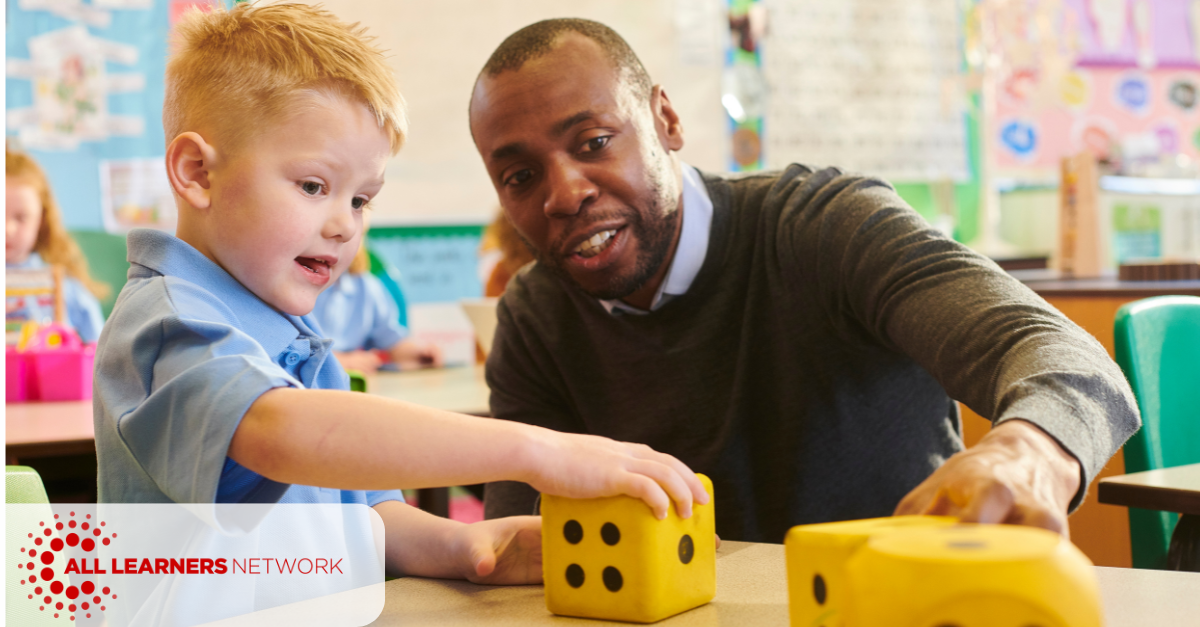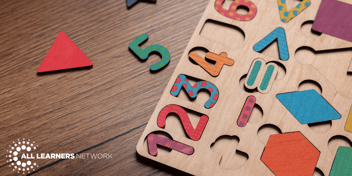
The Power of Games
Published: September 20, 2024
At All Learners Network, we know that games are a powerful tool in the math classroom. Students and educators alike can easily name some of the benefits of playing games during math class:
- Games are fun and social.
- Games are engaging.
- Games allow for strategy development.
- Games reinforce social emotional skills.
Some games allow students to be pattern seekers and discover strategies that take advantage of those patterns. In “Don’t Break the Bank” for example, students who attend to patterns will realize that building with dimes first may help get them closer to 100 without going over.

Some games allow for targeted and repetitive computation practice. For example, in the game “Factor Path” students are repeatedly thinking about whether a number is a factor of another number.


Some games allow students to explore flexibility and creativity when operating. In the game “24”, students must combine operations using the 4 fixed numbers on the dice from their roll to achieve the target number 24.

Some games allow students to be creative problem solvers. The game “Target Number” is similar to the game “24” but involves even more creative thinking for how to combine a set of numbers to achieve a target number. Upper elementary and middle school students can be challenged to play “Fraction Target Number” using a set of fraction cards instead of a deck with whole numbers.


Some games even help students better access their growth mindset. In the game “Three in a Row”, students may be coached to choose the board that will allow them to practice a particular fact family that they want to get stronger at. Goal setting and recording evidence of growth with students can happen through the use of this game.


I’m passionate about including play-based learning in our math intervention efforts. When we purposefully position games in math intervention, magic can happen. An experience I had with a student with whom I worked with in the past really hammered home for me the powerful leverage that playing games can have in a student’s learning trajectory. This student had started first grade in another state. All of our baseline assessments indicated that his strengths in math fell primarily in the kindergarten high leverage concept. His reading assessments indicated a similar starting point in early literacy skills.
When we reached out to his previous educators, we learned that this student had spent the majority of his time out of the classroom for both kindergarten and first grade while he was with them. It was a devastating combination, where his behaviors were extreme and their policies were extreme. As a result, he was regularly removed from access to instruction for large chunks of time.
We immediately began working with him on targeted literacy and math goals. He spent the same amount of time receiving reading intervention and math intervention space. His teacher consistently reinforced what we were doing in both the reading and math intervention lessons back in his regular classroom space as well. The reading interventionist was using a program which provided systematic, direct instruction to purposefully sequenced literacy skills. I was using the first grade high leverage concept progression to purposefully sequence a series of math games.
Both the reading interventionist and I were using evidence based practices and specific, measurable goals driven by data to provide this student a much needed additional layer of instruction. On paper, the reading interventionist actually had the potentially more impactful instructional design because she was using a research-based program to guide her lessons. I was using a progression and a sequence of games built based on data from each week.
Using games with this student felt truly magical. So many huge aha moments and growth happened as we joyfully played game after game in our intervention sessions. The relaxed environment of our game-play paired with the purposeful sequence of the games based on the progression and data led to so much growth for this student.
In every MTSS meeting that we had about this student after our initial interventions at the end of first grade (from 2nd-6th grade), his classroom teachers would report two completely different students in literacy and math. In math, he showed confidence, a willingness to try something new, and the ability to make sense of grade level concepts. In reading, he was consistently disengaged, unwilling to try, and seeking to leave the classroom through disruptive behavior.
Obviously, this contrast cannot be explained simply by a difference in instruction. I played games with him as an early math intervention approach. The reading interventionist implemented direct instruction as it was detailed in the research-based program, primarily call and response. The reasons for his on-going struggles in literacy are of course complex and cannot be attributed to a single factor. But I do wonder, if his early literacy intervention had been more play-based would he have been more engaged thus resulting in more growth early on when it mattered most?
We learn the most important lessons from our students. I have had so many students like the one in this story who grow best through engaging in game play. I believe that every student who needs an additional layer of math instruction should have access to play-based games and number sense routines that support early numeracy development. Purposeful game play as an early intervention approach can have a trajectory-changing impact on our most vulnerable students.
Click here for the printable version.
What Now?
1. Check out “Don’t Break the Bank” to see if you can use it in your classroom. This game is usually reserved for ALO Unlimited!
2. Purchase our $10 Games Before Kindergarten kit. If you are an ALO Unlimited member, you can access it through your account, in the Math Menu Library.
3. Bring All Learners Network (ALN) into your school or district for embedded professional development.

All Learners Network is committed to a new type of math instruction. We focus on supporting pedagogy so that all students can access quality math instruction. We do this through our online platform, free resources, events, and embedded professional development. Learn more about how we work with schools and districts here.




